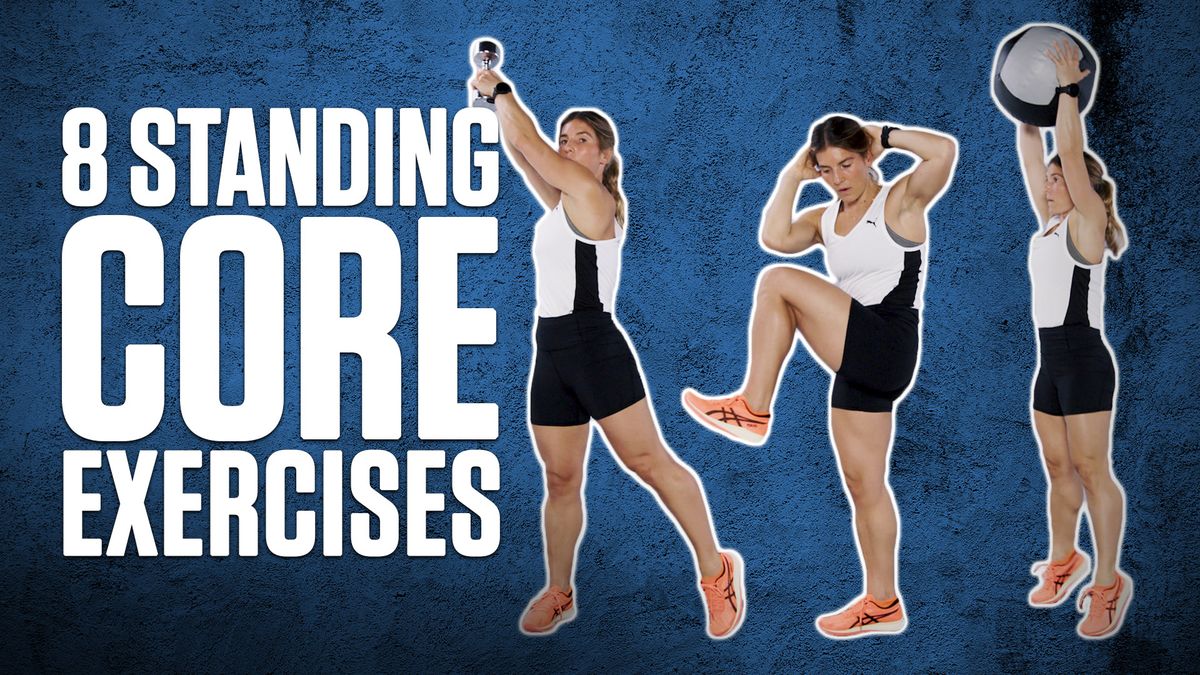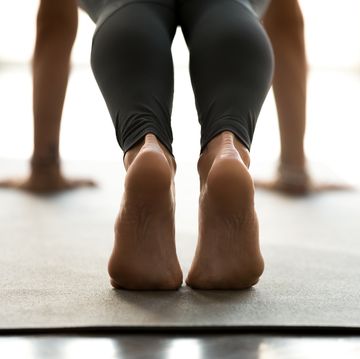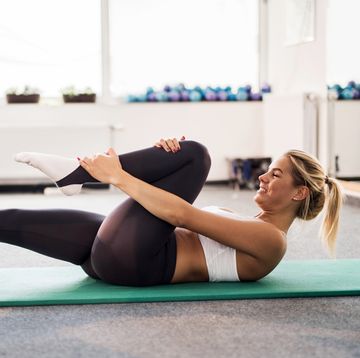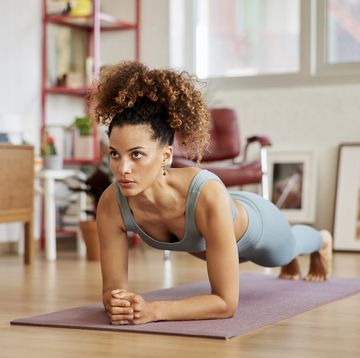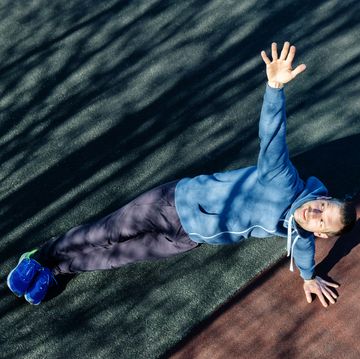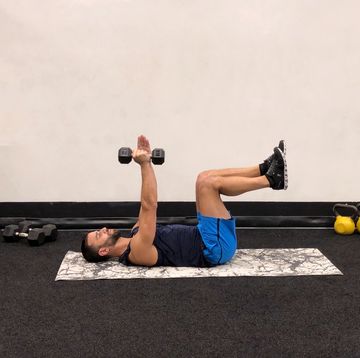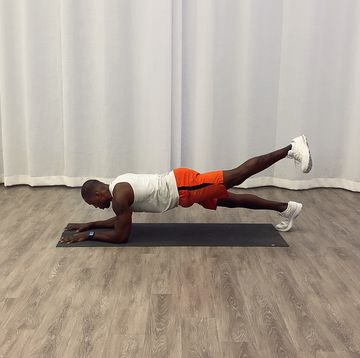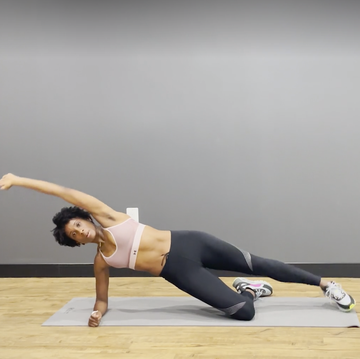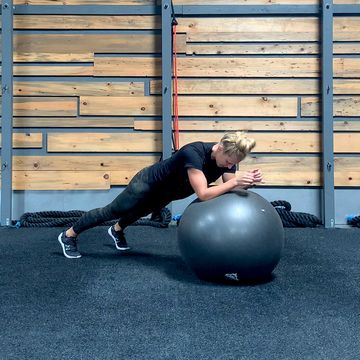Your core muscles aren’t just the ones you see in the mirror. Your core is actually comprised of all the muscles that support your spine and stabilise your pelvis, including those that wrap around your sides and support the lower back. It’s the foundation for all major movements, especially running.
Prone exercises like sit-ups and crunches have a place in any core routine, but they primarily work the superficial abdominal muscles that lie just below the skin. Standing core exercises, on the other hand, strengthen the deep core muscles and those hard-to-target obliques that keep you stable while running, says Runner’s World+ Coach Jess Movold. And a stable runner is an efficient runner.
That’s why we put together this series of eight standing ab exercises. They’ll not only breathe new life into your usual core routine, but they’ll also build better functional strength to support your training.
How to use this list: Perform each move for the number of reps listed below. Each exercise is demonstrated by Runner’s World+ Coach Jess Movold in the above video and detailed below so you can learn the proper form. Rest for 30 seconds between sets. Complete 2 to 3 sets at least twice a week.
When performing standing ab exercises, be sure to engage your core: draw your belly button in toward spine and close your ribs. You should feel like you’re bracing your midsection as you do when you laugh. This will help keep the work in your abdominals instead of in your hip flexors or arms.
You will need: a dumbbell, a slam ball, and a long resistance band with handles. A medicine ball is optional.
The dumbbell weight should be challenging but not so heavy that you begin to feel the burn in your shoulders or arms instead of your abs for these moves.
Standing Cross-Body Crunch
How to do it: Stand tall with your fingertips behind your ears, elbows out wide, and core engaged. With foot flexed, draw right knee up as you rotate from the torso to meet left elbow to right knee. Return to standing then repeat on the opposite side. Continue to alternate. Complete 20 reps on each side.
Why: The cross-body crunch hits your entire core—the upper, lower, and oblique muscles. The move also requires balance and coordination, which is essential for runners.
Weighted Side Bend
How to do it: Grab a dumbbell and stand tall with the weight in your left hand, core engaged, shoulders back, chest proud. Contract your lower abs and lean to the left as you slide the weight to left knee. Use your right oblique to pull your torso back up to standing. Complete 20 reps then repeat on the opposite side.
Why: Strong obliques help minimize side-to-side rotation while on the run.
Standing Side Crunch
How to do it: Stand tall with your fingertips behind your ears, elbows out wide, and core engaged. With foot flexed, draw right knee up and out as you crunch right elbow to right knee. Return to standing and repeat to complete 20 reps then continue on the other side for 20 reps.
Why: In addition to targeting the obliques, you can also elevate your heart rate the faster you go. This move does not hit all abdominal muscles, but it fires up the exterior ab muscles, which are key for stabilization.
Cross-Body Chop
How to do it: Stand tall with one dumbbell in both hands. Take weight overhead at a diagonal over right shoulder as you pivot left toes in. Keep both arms straight and long as you cross the weight down and over to left hip (think about swinging an ax). Draw the weight back up and repeat to complete 10 to 12 reps. Then repeat on the opposite side.
Why: This works the abs, upper back, shoulders, and glutes, making it a total-body move. It emphasizes torso rotation, which aids in hip and lumbar stability.
Med Ball Slam
How to do it: Stand tall with a medicine ball in both hands. Roll onto your toes as you draw the ball up overhead. Using your core—not your arms—hinge at the hips and crunch down to slam the ball to the ground in a squatting motion. Catch the ball and repeat for 10 to 12 reps.
Why: Short explosive bursts are one of the best ways to train the abdominal region. This move combines both strength and cardio.
Dumbbell Pull-Over
How to do it: Stand tall holding one dumbbell vertical with both hands, arms extended straight out in front of chest at shoulder height. Engage your core then draw the weight up overhead. Stabilize, then slowly lower the weight back down to chest height. Repeat for 10 to 12 reps.
Why: Overhead resistance will challenge your core in a new way. For the best results, think about contracting your abdominals the entire time and pulling the navel closer to the spine. Remember: The dumbbell should not be so heavy that you feel the burn in your shoulders instead of your abs.
Standing Halo
How to do it: Grab a medicine ball, dumbbell, or kettlebell and stand tall, core engaged. Lift the weight up to right shoulder and rotate it around your head. Complete 10 reps then reverse direction to complete another 10 reps.
Why: The rotational movement of the weight forces your core to stabilize. A smaller size weight will make it easier to manoeuvre.
Trunk Rotation With a Band
How to do it: Stand to the side of the anchor point and grab the handles of the resistance band with both hands. Extend arms straight out in front of you with core engaged. Rotate your torso toward the anchor then use your core to reverse back to the starting position. Engage through your midsection to keep the hips stable. You should feel this on both sides of your abdominals. Complete 10 to 12 reps on each side.
Why: This strengthens your abs through the rotational movement, targeting the hard-to-hit oblique muscles. For best results, make sure you squeeze glutes to avoid strain on the knee.
